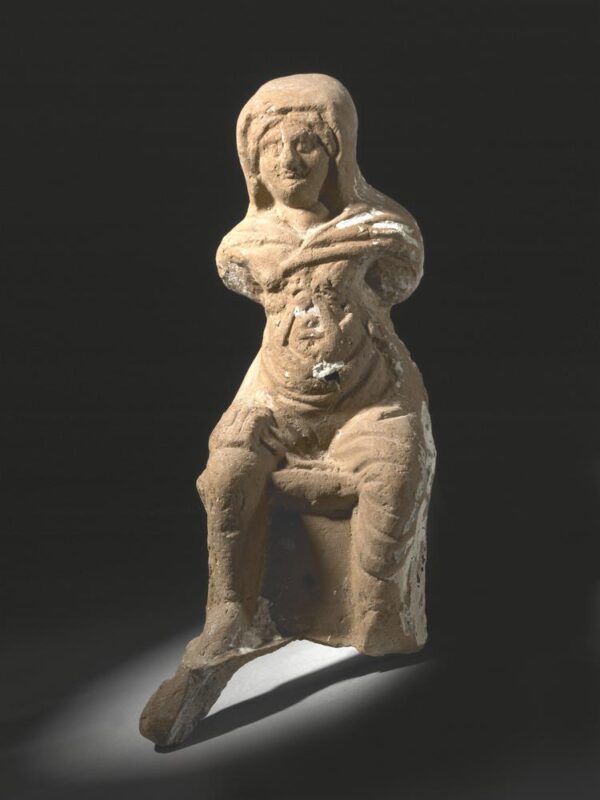Medical science has a number of precise methods to test pregnancy as soon as possible. All of these strategies, however, have only been around for a century. Prior to this, relatively crude and inaccurate methods for determining whether a woman is “in a position” or not had been utilised for thousands of years.
However, when scientists examine procedures that are hundreds or even thousands of years old, they are startled to discover that the vast majority of them are based on precise knowledge of the female body, or at the very least on extremely serious observations.

Women have always attempted to learn as soon as possible about their pregnancy. Another essential piece of information has always been the sex of the unborn child. As a result, some methods merged gender with the notion of “interesting position.”
Babylonian clay cuneiform
It’s unclear when individuals first attempted to test for early pregnancy.
However, the first mention of the pregnancy test can be discovered on Babylonian clay cuneiform tablets. The residents of this ancient empire had extensive medical expertise; therefore, it’s not unexpected that it was Babylonian priests, who represented both the spiritual and scientific elites in one person, who came up with the idea of developing a true pregnancy test.
Cult members gathered particular herbs and squeezed the juice out of them to see if a lady was pregnant or not. They soaked a sheep’s wool tampon in it, which a woman with a possible pregnancy had to wear for several days.
The swab was then withdrawn and immersed in a solution of mineral salts. If the object’s colour turned red, it meant the mother was going to have a baby. And if it went green, the alarm might have been erroneous. The test’s principle was most likely based on a shift in acidity in a pregnant woman’s body.
Egypt : urinate on grain
For the first time, they attempted to integrate the definition of pregnancy with the sex of the unborn child in ancient Egypt. Their approach was really simple: over several days, a woman had to urinate on grains of barley and wheat. If the barley sprouted, a boy was expected, and if the wheat sprouted, a girl.
The grains should not have germinated at all if there had been a “false alert.”

The most remarkable part is that scientists examined this approach three thousand years later, in 1963, and were astonished to discover that the grains grow in 7 out of 10 cases during pregnancy, but not if there is no pregnancy.
However, it was impossible to prove that germination was dependent on the foetus’s gender; this was already a widely held belief. The “quick test” was also employed by the Egyptians.
To test pregnancy instantly, dark beer was poured onto the room’s floor, and a lady was placed in the center to be examined. If a person felt unwell after sitting in a puddle of intoxicating drink, it was taken as an omen that the family would be replenished soon.
This strategy has a straightforward explanation: pregnant women become extremely sensitive to scents and do not always behave appropriately.
Hippocrates: honey and crushed anise
In the ancient world, the Greeks enjoyed a significant advantage over their neighbours because they possessed Hippocrates, the “great father of medicine.” The bright scientist was one of the first to reject superstition and seek out the true reasons for various bodily processes.

He left a large scientific legacy in the form of books and reference books, with at least nine related to obstetrics and geneology.
Hippocrates was the first to suggest that the menstrual cycle could be linked to pregnancy. The cessation of critical days and a variety of additional indications, such as sickness, weakness, and low appetite, were all used by the Greek system of medicine to reliably detect pregnancy.
Hippocrates, on the other hand, discredited himself in still another way, by being totally ignorant. In a bowl of water, the scientist blended honey and crushed anise and handed it to the patient to drink. If a woman complained of “peritoneal cramps,” she was told she was pregnant. If there was no conception, then the drink was ineffective.
Russian Traditional method
Women in Russia have traditionally been known for their prudence. Beads were tied around the neck of a bride-to-be so that they would fit against her neck. It was thought that if the jewellery began to cut into the neck, it was a sure sign of pregnancy.
The thyroid gland grows larger during pregnancy as a result of a hormonal surge; thus, this method makes sense. However, despite its scientific foundation, the ancient Slavic approach was inaccurate.
A lady who has married may recuperate, and the beads will merely indicate an increase in the volume of the neck in this scenario. It’s weird, but even in this day and age of advanced medical technology, there are still instances where childbirth comes as a complete surprise to the lady in labour.
WHY I LOSING FRIENDS, WHY I NEED FRIENDS
Friendship bonds are often stronger than romantic ones, and losing friends can be much more…
scientists who died because of their discoveries
Bell, Edison, Tesla etc. are standing among the famous inventors, who we frequently want to…
8 Amazing Pics of Swimsuit Competitions in the mid of the 1920s
The 1920s were brilliant in many ways, including the way that women looked, who for…
Honeymooner’s Love hotels in Japan, A Historical, Bold, Kinky & Happening
Love hotels are new trends in hi-tech Japan. My visit to such a country has…
Remind the Lata Mangeshkar : Biography, Facts and Stories
Lata Mangeshkar is a legendary Indian singer and music composer who has recorded thousands of…
Alert before a long trip [ 5 situations for every traveler must know ]
Many people travel by themselves by car or any other vehicle. before a long trip…





![Alert before a long trip [ 5 situations for every traveler must know ]](https://topicflix.com/wp-content/uploads/2022/03/travel-blog.jpg)